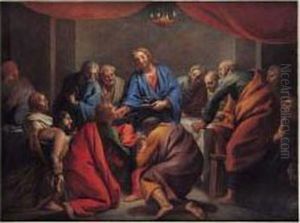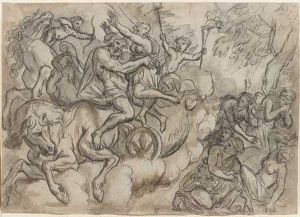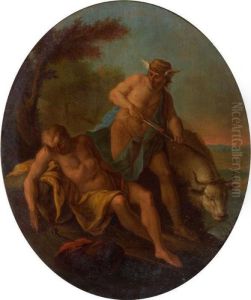Daniel Ii Sarrabat Paintings
Daniel II Sarrabat was a French painter, draughtsman, and engraver active during the late 17th and early 18th centuries. Born in 1666 in Nantes, France, Daniel came from a family of artists; his father, Daniel I Sarrabat, was also a painter. His family's artistic lineage played a significant role in his early education and introduction to the art world, ensuring that he was immersed in an environment conducive to developing his artistic skills from a young age.
Sarrabat's work is characterized by its delicate rendering and attention to detail, which was typical of the Baroque period. He specialized in creating works that depicted scientific subjects, such as anatomy and botany, as well as religious themes. His scientific illustrations were particularly significant during his time, as they contributed to the dissemination of knowledge in an era when scientific inquiry was burgeoning and the Enlightenment was on the horizon.
Although Sarrabat is not as widely known as some of his contemporaries, his contributions to the world of scientific illustration and religious art were noteworthy. His engravings and paintings were precise and informative, which made them valuable to scholars and collectors. Sarrabat's style reflected the transition from the Baroque to the Rococo movement, incorporating the former's grandeur with the latter's lighter elements and ornate details.
Daniel II Sarrabat continued to produce art throughout his life, contributing to the cultural and intellectual fabric of his time. He passed away in 1748, leaving behind a body of work that, while not as celebrated as that of some of his peers, remains a testament to the role of art in the service of both religious devotion and scientific exploration.



